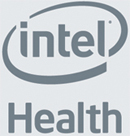The problem for telehealth is getting paid


The fee for service model provides incentives to do more care, to run more tests, and the threat of malpractice encourages this. But it was driving costs through the roof, and even the industry has known for years it must be changed.
The new model is a per-patient fee, which provides incentives for wellness and for saving money. If you hear "ka-ching" every time you touch someone you will touch them as often as possible. If you hear that sound every month, or every year, regardless of what you do, you'll seek to do less, or do more with less.
At this week's American Telemedicine Association event in San Antonio those tensions were on display. Technology was a big factor in the debacle of the fee for service model. Many doctors invested heavily in it, buying machines and launching their own imaging clinics. Where is their new profit model?
Telemedicine is one answer, and Intel came prepared with a made-to-order survey, created by the political polling firm of Penn, Schoen and Berland. (Mark Penn worked for Democrat Hillary Clinton, Doug Schoen talks on GOP Fox, and Berland worked for Michael Bloomberg, who has been both.)
Its purpose was to say telehealth is the next big thing. The firm interviewed 75 "c-level" executives (hospital CEOs, CIOs, etc.) and 89% agreed with the premise. The survey found two-thirds of hospitals already use telehealth, with an 87% success rate.
Data Monitor also provided the requisite hockey stick graph, showing a 56% annual growth rate and sales of $7.7 billion in 2012 while the clinical market as a whole grows just 9.9%/year.
There were even some case studies of hospitals like St. Elizabeth's in Indiana buying telehealth for a new "patient-focused" medical center.
So what's the problem? It's the reimbursement model.
While the health care law encourages the development of new reimbursement models, it neither mandates nor describes them. If monitoring a patient at home saves 25% of costs, through lower readmission, the hospital loses money unless the fee for the monitoring can both increase its margin and grab share.
Intel wants patients and their families to pay these costs. If you buy it to monitor your mom, you get the costs but your insurer can pocket the savings.
That works for part of the market, the high end, but it doesn't drive volumes across the chasm. It doesn't create a mass market.
That will require changes in insurance. The industry should be selling policies with a fixed fee per-patient, so that telehealth solutions are paid for and there's someone in business to pocket the savings and drive mass market adoption.
Given the savings required of Medicare under health reform, that insurer is likely to be the U.S. government. Look for Medicare to lead this move to the mass market, and for private insurers to follow. Or can it be done through Medicare Advantage?
These are the kinds of questions that will have to be asked, but they won't be answered by "c-level" executives in hospitals. They will be answered by policymakers like CMS, and by big insurers like UnitedHealth.
Intel is a great company, but it's asking the wrong questions to the wrong people, and seeking to extract money from the wrong customer set.